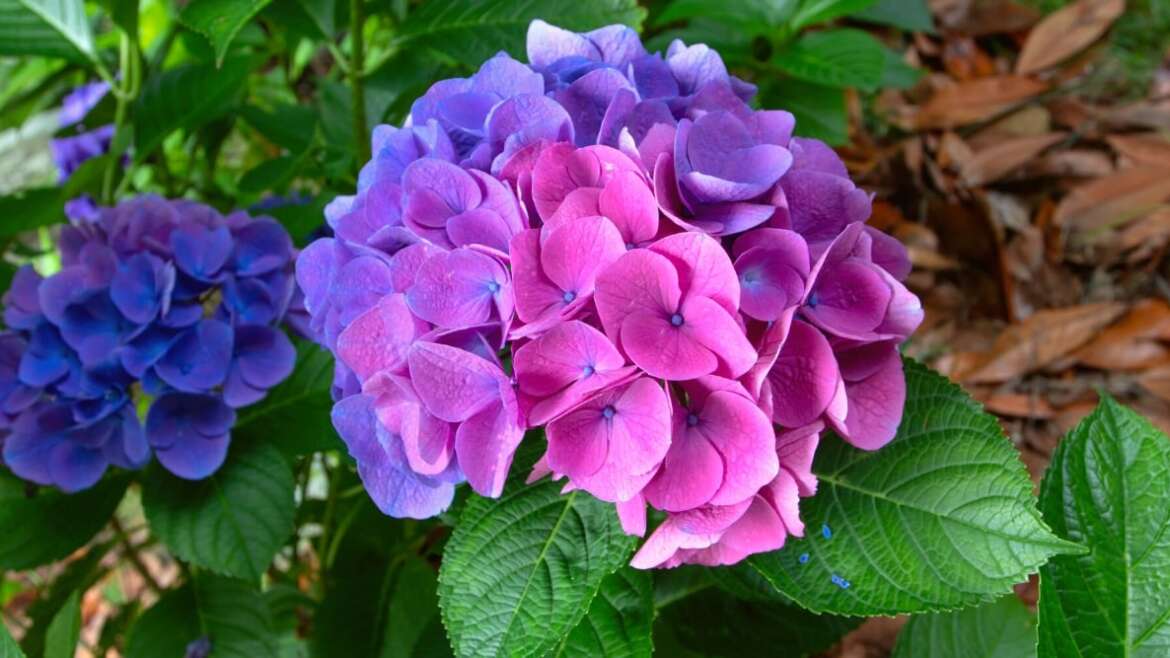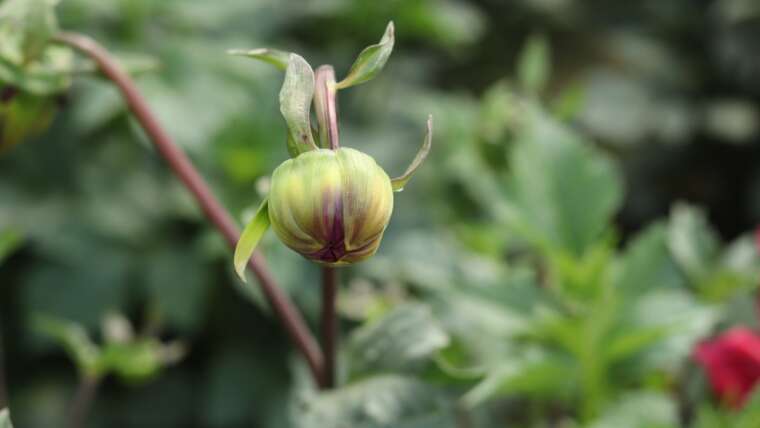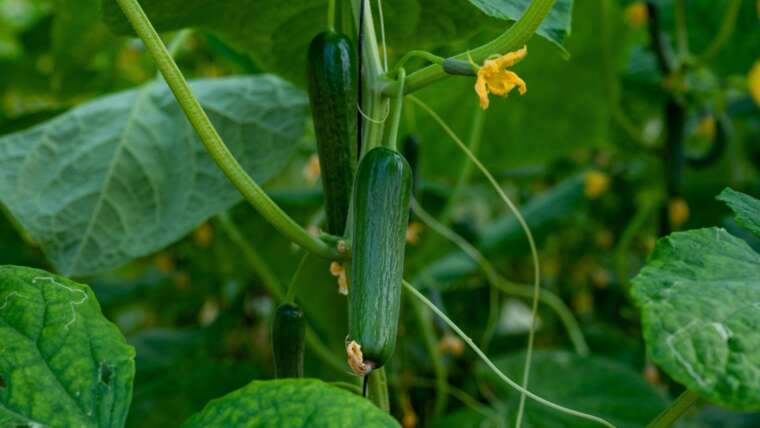Successful gardening requires a certain level of patience. But, if you’re like me and are a wildly impatient gardener, waiting for results can be agonizing. We often search for quick fixes to resolve our problems, from speedy hacks to household items with supposed miraculous effects.
One household item famous in the gardening (and home cleaning) world is baking soda. Sodium bicarbonate is recommended for a range of ills, from diseases to lack of blooms and more. There are many claims as to the miracles of baking soda.
Unfortunately, the science and testing of baking soda on hydrangeas doesn’t always reveal the results we’d like to hear. Let’s break down what baking soda can (and mostly can’t) do for your plants to determine whether it’s good or bad for hydrangeas.
The Short Answer
Baking soda (sodium bicarbonate or NaHCO₃) is generally considered bad for hydrangeas. It may have some benefits in preventing fungal disease and killing weeds, but the risks of overuse are far too high to consider them effective treatments. Common beliefs like changing flower color or boosting growth also have no scientific basis.
The Long Answer
There are long lists of supposed uses for sodium bicarbonate in hydrangeas. While some are straightforward, others can get a little more nuanced. Let’s break down each claim to dissect how it actually impacts your hydrangea plants.
Does Baking Soda Change Hydrangea Color?
Changing hydrangeas’ hue requires understanding the aluminum content in the soil.
One of the reasons gardeners love hydrangeas is their unique ability to change color. Depending on which species you’re growing, adjusting the soil can produce a range of color changes. From captivating blue to the brightest pinks and all the purple hues in between, these flowers are true rainbows.
Unfortunately, if you’re looking to alter the color of your hydrangeas this season, your pantry staples won’t help. Contrary to popular belief, baking soda does not change hydrangea colors.
Aluminum Changes Hydrangea Bloom Color
The color transformation of hydrangeas doesn’t actually come down to basic pH shifts. To get technical, the color of your hydrangea blooms largely depends on the availability of aluminum in the soil. Blue hydrangeas can indicate there is aluminum in the soil, while pink indicates a lack of aluminum compounds. Purple flowers mean the concentration of aluminum ions is somewhere in between.
Soil pH has an indirect role by affecting aluminum’s solubility or availability in soil. In other words, aluminum is made available to the roots in acidic soil and not as much in alkaline soil.
Changing Soil pH Is Not Always Simple
Baking soda is an alkaline substance with a pH of around 9. This means it may increase the pH of a solution when dissolved in water. But when it comes to soil, things are not that simple.
Soil buffering capacity – the soil’s resistance to pH change – is quite high in loamy soil (less so in sandy soil). The small amount of baking soda typically recommended doesn’t have much of an impact. It usually leaves the pH, and thus, the hydrangea color, unchanged. If you add more, you risk damaging the roots and potentially killing the plant while trying to change its color.
The Verdict
For practical and effective pH alterations, baking soda is not the answer. Instead, use tried and tested soil amendments like:
- Sulfur to lower pH (acidify the soil)
- Lime to increase pH (make the soil more alkaline)
For additional information, we have a complete guide on how to successfully lower or raise soil pH.
Does Baking Soda Boost Hydrangea Flowering?
 Baking soda does not enhance hydrangea flowering, as it lacks essential nutrients.
Baking soda does not enhance hydrangea flowering, as it lacks essential nutrients.
To produce more flowers on hydrangea plants, gardeners often look to home remedies like baking soda or Epsom salt to boost their plants. However, this usually results in disappointment.
Flowering is a complex process governed by many factors, such as genetics, light exposure, temperature, and nutrients. Nutrient availability certainly plays a significant role in ensuring the hydrangeas have everything they need to push out flowers. These include macronutrients (nitrogen, phosphorus, and potassium) and secondary micronutrients for complete plant health.
Baking soda, or sodium bicarbonate, does not contribute to the broad spectrum of essential nutrients that boost flowering.
Although it is a necessary micronutrient, sodium is needed in such small quantities that adding it to the soil is unlikely to influence flowering. If sodium builds up in the soil, it will actually have the opposite effect. Too much sodium can inhibit flowering and potentially permanently damage the roots.
Bicarbonate (HCO3) contains hydrogen, carbon, and oxygen, which plants need but have other methods of obtaining. The tiny amounts of these chemicals added to the soil to boost flowering are more likely to harm flowering than help it.
The Verdict
To boost your shrub’s blooming potential, stick with a balanced, slow-release fertilizer that provides all the necessary nutrients in the right proportions. Supplement this with adequate watering, plenty of sunlight, and your hydrangeas should reward you with as many blooms as they can naturally produce.
Does Baking Soda Remove Fungal Disease?
 Sodium bicarbonate may have some limited use in preventing fungal diseases on hydrangeas, but it cannot cure existing infections.
Sodium bicarbonate may have some limited use in preventing fungal diseases on hydrangeas, but it cannot cure existing infections.
While the previous two claims were an outright no, the link between baking soda and fungal disease is a little more murky. While this kitchen ingredient is argued to have some fungicidal properties, it’s important to understand its limitations and correct usage.
Potassium bicarbonate, close in structure to sodium bicarbonate, has been tested on hydrangeas (specifically bigleaf hydrangea in this study) and is registered for use as a fungicide. The study aimed to determine the ability of potassium bicarbonate products – and a range of other fungicides – to prevent fungal diseases like powdery mildew and Cercospora leaf spot.
The study found that the potassium bicarbonate did limit some issues with fungal disease but did not prevent them completely. Where it was applied in large enough amounts to have more of an impact, other aspects of growth suffered. Interestingly, the popular ‘Nikko Blue’ variety showed the most damage when this remedy was applied.
By extension, baking soda may be moderately useful in limiting issues with fungal disease. It is believed to make the environment on the leaf surface inhospitable to fungal spores, preventing their development and spread.
However, there is an important distinction to make here – it doesn’t cure existing infections. Once the fungus has taken hold of the plant, a surface treatment of this kitchen ingredient won’t eliminate it.
Sodium also harms plants in high concentrations, potentially leading to other growth problems when overused.
The Verdict
Baking soda may potentially prevent certain fungal diseases in hydrangeas. However, it has not been sufficiently tested and cannot cure existing fungal infections. Using it carefully is crucial, as overuse can lead to sodium toxicity. Instead, use correct planting and watering techniques and appropriate fungicides if the fungal disease becomes an issue on your hydrangeas.
Does Baking Soda Kill Weeds Around Hydrangeas?
 Baking soda may kill weeds but also harms other plants if used in large amounts.
Baking soda may kill weeds but also harms other plants if used in large amounts.
Weeds are a huge nuisance, and we all want to find ways to get rid of them that don’t involve hours hurting our knees and backs, painstakingly pinching out new growths one by one. You may have hoped baking soda could come to the rescue, and it certainly can. But this will be at the expense of other surrounding plants and your garden environment as a whole.
When used in high concentrations, sodium bicarbonate damages root and plant tissue, dehydrating it and leading to the death of any pesky weeks. It is usually applied to foliage or around the base of any weeds to kill them off, making them much easier to remove.
However, this kitchen ingredient is unfortunately just as lethal to your beloved hydrangeas as it is to those uninvited weeds when used in large amounts.
If you sprinkle sodium bicarbonate liberally around your hydrangeas in the hope of eliminating weeds, you’re also risking your hydrangeas’ health. The sodium can accumulate in your soil, reaching toxic levels for your shrubs, inhibiting water uptake and nutrient absorption. This can cause root damage, leaf burn, and even plant death in severe cases.
Sodium bicarbonate can also wash away in rain or tap water, spreading around your garden and potentially harming other plants. The effects will differ depending on how much you use, but it is certainly a risk I wouldn’t be willing to take in my backyard.
Baking soda can be lethal to weeds, but also your hydrangeas.
The Verdict
This kitchen ingredient can kill weeds, but it is a scorched earth approach to their removal that can kill off the plants you are trying to help at the same time. Using safer methods to manage weeds around hydrangeas is best, like hand-pulling and mulching. Treat it as a meditative activity that requires patience rather than looking for a quick fix.
Is Baking Soda a Good Hydrangea Fertilizer?
 This kitchen product lacks essential nutrients for hydrangeas and can harm their roots, making it unsuitable as a fertilizer.
This kitchen product lacks essential nutrients for hydrangeas and can harm their roots, making it unsuitable as a fertilizer.
Fertilizers are designed to provide essential nutrients to plants. They are rich in nitrogen, phosphorus, potassium – the three macronutrients – and other secondary micronutrients. For baking soda to be an effective complete fertilizer, it must contain a good amount of these essential components.
Sodium bicarbonate – or NaHCO₃ – lacks most of the nutrients your hydrangeas need to grow successfully. Sodium (Na) is one component some plants use, but only as a micronutrient required in very small amounts. It’s also quite rare for soils to lack sodium, or at least so much so that it negatively impacts growth.
As mentioned, too much sodium can harm your shrubs, destroying root health and negatively impacting growth.
The Verdict
While using an everyday pantry item like baking soda as a fertilizer might sound tempting, it’s unsuitable for hydrangeas. Sodium bicarbonate lacks the essential nutrients needed for plant growth and will likely damage the roots.
Stick with tested fertilizers for your hydrangeas that offer the balanced nutrition they need to thrive, and pay attention to overall soil health to improve growth.
Final Thoughts
If you have spare baking soda in your kitchen, keep it in the pantry rather than using it outdoors. You will save yourself a lot of stress and potentially dead plants by focusing on tested methods scientifically proven to work over old wives’ tales.




